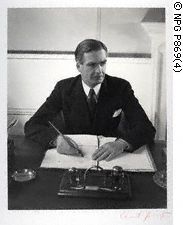AFGHANISTAN: THE ALTERNATIVES
It is time to be far more realistic about the war in Afghanistan. It may well still be winnable, but it is not going to be won by denying the risks, the complexity, and the time that any real hope of victory will take. It is not going to be won by “spin” or artificial news stories, and it can easily be lost by exaggerating solvable short-term problems....
Two critical questions dominate any realistic discussion of the conflict. The first is whether the war is worth fighting. The second is whether it can be won. The answers to both questions are uncertain. The US has no enduring reason to maintain a strategic presence in Afghanistan or Central Asia. It has far more important strategic priorities in virtually every other part of the world, and inserting itself into Russia’s “near abroad,” China’s sphere of influence, and India’s ambitions makes no real sense. Geography, demographics, logistics, and economics all favor other nations, and no amount of academic hubris can realistically model American reform of the “Stans” in ways that are cost-effective relative to other uses of US resources....
There is little doubt that the US and ISAF can continue to win open tactical clashes. The risks lie primarily in the creation of an ANSF that can actually transition to the point of largely eliminating the role of the US and other ISAF forces in combat, and – above all – creating the effective civil side of a US/ISAF effort that can convince the Afghan people that fighting the war will be worth the cost, that a mix of government capabilities will come to exist that are far better than living under the Taliban, that their basic economic needs can be met, and they have a credible path to economic development.
It was all too easy to formulate a new strategy based on “shape, clear, hold, build, and transition” as long as the civil side of “hold, build, and transition” was conceptual, and did not have to be implemented in rural areas like Marjah and the far more challenging conditions of a largely urban area like Kandahar. It was clear from the start, however, that any practical application of this strategy lacked operational definition on the civil side, that the aid community was not ready to implement it and any civilian “surge” would still leave civil activity highly dependent on the US military, and that building Afghan capabilities would be a slow effort that had to occur at every level from local to central government. It short, implementation was never a military-driven exercise in finding the right troop to task ratio, but always a politico-economic exercise in resource to experiment ratio.
General McChrystal and ISAF deserve praise, not criticism, for accepting these realities. There is a clear need to slow the campaign in Kandahar, to correct the problems that occurred in Marjah, to avoid major combat of the kind that took place in Fallujah, to realistically build government services while finding viable compromises with power brokers, and to move forward on a pace dictated by Afghan acceptance and not US/allied impatience. There are acute limits to any civilian surge, which can only act at the pace that the number of capable US and allied civilians and military personnel with civil-military expertise permits. To paraphrase a lesson from Iraq, the campaign can only succeed if it operates according to Afghan and not US time. As noted earlier, this means that determining whether the war can be won or lost almost certainly should slip from 2010-2011 to 2011-2012. If it does not, it may be a sheer lack of strategic patience – not the other difficulties we face – that loses the war.
At the same time, the fact that the scale of the civil challenge, and ANSF development, are both higher than previously estimated may require more attention to a potential weakness in the overall strategy and campaign plan. Focusing on Kandahar as the greatest challenge makes sense if that challenge can be quickly met. If delays are as inevitable as now seems likely, more attention may well be needed to the less demanding challenges of pushing a much more limited insurgent presence out of the north, west, center, and parts of the east. Reversing insurgent momentum would be much easer to accomplish and would put greater and earlier pressure on the overall mix of insurgents.
These are not likely to be popular conclusions. They require considerable leadership on the part of the US, as well as close and frank coordination with our allies. Moreover, they require acceptance of the fact that the case for the war is not based on some certainty of victory, but odds that may well be even -- or worse. It is time, however, to come to grips with the sheer scale of the US mistakes that led to the rise of the insurgency in Afghanistan, and to start addressing the reality that we may face many wars in the future against extremists that exploit the weakest and most divided states, fight similar wars of political attrition, and force the US to commit forces and money to weak governments and nations that do not meet many Western expectations.
Anthony Cordesman & Jason Lemieux, "The Afghan War: A campaign Overview," 23 June, 2010, in www.csis.org
"The real crisis, however, is that the US-Nato strategy in southern Afghanistan has barely made a dent in the Taliban’s resistance, which is spreading across the country. Nato’s offensive in Marjah, in Helmand, is five months old and still has not secured the area. The anticipated surge to secure Kandahar province has been postponed due to the Taliban’s penetration of the region. Seventy-nine Nato soldiers have been killed in June so far – the highest monthly figure since the war began....
That may not be possible, so a political strategy must now be paramount. The Taliban leadership has let it be known it wants to talk to the Americans. Many Afghans also want Washington’s participation in the talks, so the US can be a fire-break, ensuring Mr Karzai does not make too many concessions, and preventing neighbours such as Pakistan from imposing conditions upon Kabul.
The military strategy must be subservient to this new political process. Instead of going for the hardest killing fields first – Kandahar and Helmand – US and Nato forces should focus on more achievable objectives, such as governance and economic development.
The first priority should be securing the roads linking major cities, and linking cities to the frontiers. Even the critical Kabul-Kandahar highway is littered with checkpoints run by corrupt police, criminal gangs, warlords and Taliban groups, making it unsafe for travel by Afghans. Clearing key roads will bring security to trade, providing an economic boost and reducing corruption.
Next, the provinces around Kabul should be cleared of the Taliban, so aid agencies can operate. US resources to expand economic and agricultural development could then be spent.
The Taliban are not numerous in these provinces but they terrorise a population that is largely pro-government. Moreover, the still weak Afghan army and police could be better used to secure these areas, because many of their recruits come from these same provinces. The same process can then be repeated in the eastern provinces, and in the north. These areas are more pro-government than the south, where the Taliban has reigned untouched since 2002.
In the south, Nato forces should conduct a holding operation preventing Taliban expansion, eliminating its leadership, blocking supply routes from Pakistan and trying to alienate it from locals.
Gen McChrystal’s counter-insurgency strategy no doubt reaped dividends such as reducing casualties and winning hearts and minds. But a military strategy rooted in political dialogue, and which takes on easier goals first, is more likely to gain support from the Afghans and regional countries, and enable western troops to stay longer if necessary. The alternative is a deeper chaos".
Ahmed Rashid, "It is time to rethink the West's Afghan strategy," 25 June 2010, in www.ft.com.
Anthony Cordesman and Ahmed Rashid are probably the two best commentators on the Afghan War currently writing today. What in essence their overall 'take' on the conflict is that while not by any means 'lost' or 'unwinnable', the war in Afghanistan is (in the words of Bonaparte) 'a hard slog'. The idea that we can (as per it would appear the American Vice-President Mr. Biden, begin to see the commencement of the withdrawal of American forces is risible. Indeed, it is the belief among the Taliban that the American and their allies do not have staying power, which has resulted in upsurge of Taliban attacks in the South of the country, as well as elsewhere. This belief has also reinforced a pre-existing caution & hesitancy by the Afghan President Mr. Karzai. The latter in recent weeks exploring possible pour parler with elements of the Taliban who are controlled by Pakistan. And, while it has been Washington's gameplan for almost two years to eventually seek a modus vivendi with elements of the Taliban, this was only supposed to happen after a clear military defeat of the same. Any endeavors to come to an arrangement with the Taliban, whether or not controlled by Pakistan will only have the end-result of ushering in a quick collapse of the regime in Kabul, as the non-Pashtun elements in the regime rapidly withdraw their support for the same. A wonderful example of what may occur is the endemic instability that South Vietnam suffered from in the aftermath of the assassination of President Diem in November 1963. And, lest anyone have any illusions along the idea that a collapse of the regime in Kabul will have no long term aftershocks outside of the Afghanistan-Pakistan area, the words of Anthony Cordiesman are highly apt in this context:
"The key reasons for the war remain Al Qa’ida and the threat of a sanctuary and base for international terrorism, and the fact the conflict now involves Pakistan’s future stability. One should have no illusion about today’s insurgents. The leading cadres are far more international in character, far better linked to Al Qa’ida and other international extremist groups, and much closer tied to extremists in Pakistan. If they “join” an Afghan government while they are still winning (or feel they are winning), they are likely to become such a sanctuary and a symbol of victory that will empower similar extremists all over the world.
Experts disagree sharply about Pakistan’s instability and vulnerability in the face of a US and ISAF defeat in Afghanistan. There is no way to predict how well Pakistan can secure its border and deal with its own Islamic extremists, and Pakistan is both a nuclear state and a far more serious potential source of support to other extremist movements than Afghanistan. A hardline, Deobandi-dominated Pakistan would be a serious strategic threat to the US and its friends and allies, and would sharply increase the risk of another major Indo-Pakistani conflict....
The fact is, the strategic case for staying in Afghanistan is uncertain and essentially too close to call. The main reason is instead tactical. We are already there. We have major capabilities in place. If we can demonstrate that the war can be won at reasonable additional cost in dollars and blood, it makes sense to persist. But, only if we can demonstrate we can win and show that the additional cost has reasonable limits. Containment and alternative uses of the same resources are very real options, and would probably be more attractive ones if we could somehow “zero base” history. The reality is, however, that nations rarely get to choose the ideal ground in making strategic decisions. They are prisoners of their past actions, and so are we".











0 Comments:
Post a Comment
<< Home